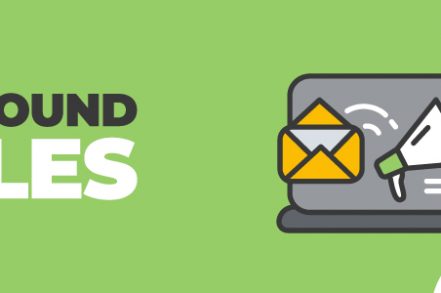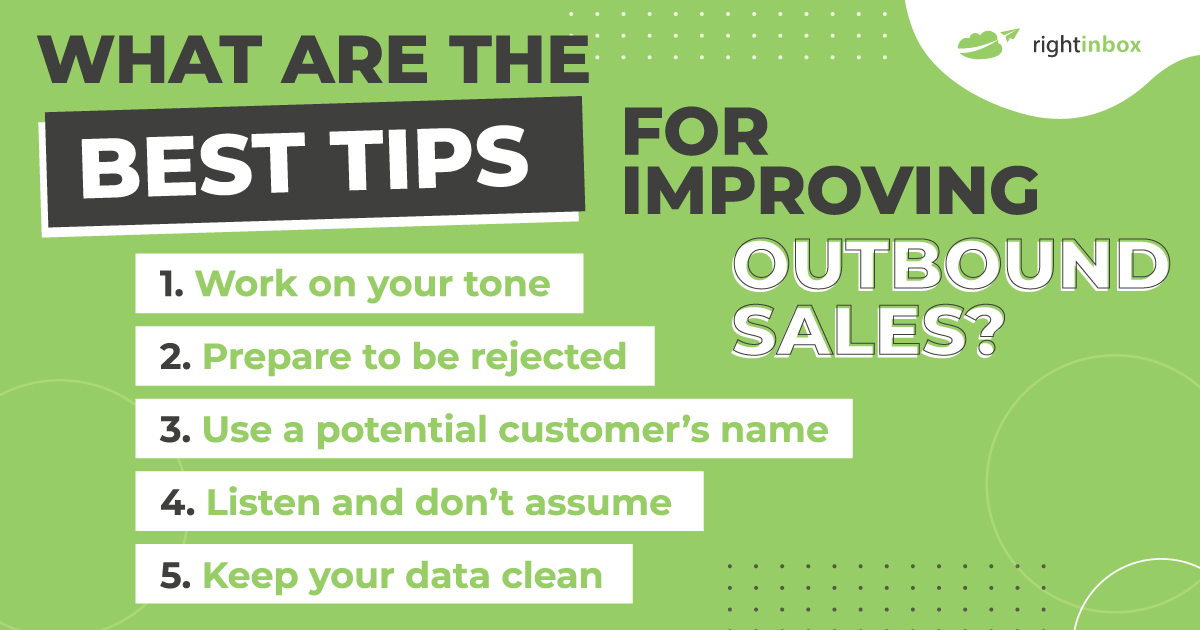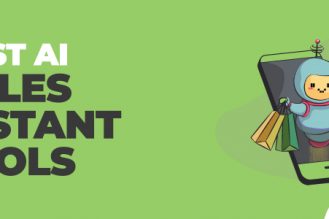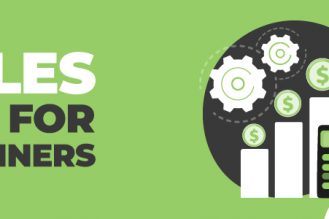89% of marketers agree that email is their main channel for outreach when performing lead generation. And it makes sense, email is widely used by every business person.
But what is outbound sales in the first place, and why does it matter? We’ll answer that question in this article, as well as how to do it effectively and efficiently.
What Is Outbound Sales?
Outbound sales refers to any outgoing sales activity that is not prompted by a prospect’s action and which aims to get them interested in a business’s offering to ultimately close a sale.
This is the opposite of inbound sales, which is a process whereby prospects initiate contact with a business, either by engaging with its content or marketing materials, or by directly inquiring about its offerings.
When it comes to outbound sales, the most common methods are cold calls made by sales reps as well as cold emails sent out to potential leads. Sales development reps in particular are generally tasked with outbound sales. They will often work from a list of contacts and cold call their way through them. They create the connections that the salespeople later pick up and close.
Lead response reps, on the other hand, are responsible for inbound leads. They may make a lot of outgoing calls or send follow-up emails, but they fall under the umbrella of inbound sales as they only come into play once a prospect has already shown interest.
Differences Between Outbound and Inbound Sales?
Both outbound sales and inbound sales can be effective strategies to grow your company. While there are some similarities, there are key differences to consider when determining which strategy to focus on.
Similarities Between Outbound Sales and Inbound Sales
Some of the main similarities between outbound and inbound are:
- Outcome:The goal is to acquire customers via sales calls or presentations
- Presentation Structure: Typically, the sales presentation is a separate call that has the same flow regardless of the source of the lead
- Team Members: The type of people who are good at sales can typically float between inbound or outbound.
Differences: What Separates Outbound Sales from Inbound Sales
That being said, there are distinct differences between the two:
- Funnel Versus Cold Outreach:With outbound sales, you have the ability to control the lead flow. You can qualify prospects faster, only reaching out to those who are likely to want your product.
- Time: It is often much faster to use outbound sales, as a salesperson can reach out to hundreds of people per day using email or phone calls.
- Standing Out: Very few companies are willing to do outreach. Therefore, you will stand out in the marketplace if you perform outbound.
- Costs: It may cost your company a few hundred dollars per month to send cold emails. Inbound sales requires thousands of dollars in advertisement, potentially each day.
Why Choose Outbound Over Inbound Sales?
There are several reasons you should choose outbound sales over inbound. Some of the primary advantages include:
1. Speed to Market: It’s often crucial to bring a new product feature to your customers before competitors. What faster way to achieve that than reaching out directly via email?
2. Scale: You can send as many outreach messages as you want for pennies on the dollar compared to ads. Plus, you can automate the process.
3. Control: Ultimately, when you have someone’s phone number or email, you have the most powerful piece of information possible. You can remain in contact with the prospect forever. This means you “own” your list, instead of being reliant on a social media platform that may change the rules or shut your account down overnight.
Ultimately, outbound sales is something that all fast growing companies do. It helps them reach their ideal customers and forecast their sales by tracking activity (outreach emails for instance) to their bottom line.
5 Outbound Sales Steps to Follow in 2024
1. Prospecting
Prospecting is the art of collecting data about your potential customers. You can use sites like LinkedIn or Facebook to understand their roles, their tendencies, and even the industries in which they work.
Proper prospecting lets you build out your customer avatar. That way, you can create a marketing and sales process that attracts the right clients.
2. Cold Outreach
Once you’ve done your prospecting, you know who you’re targeting with your business offering. However, the time comes when you actually need to make contact. This is where cold outreach comes into play.
You can reach your prospects via email, phone calls, social media ads, or even in person.
When you perform cold outreach, make sure to quickly explain what you’re offering and why you believe it is relevant to that specific prospect. That way, you can book a meeting or take them deeper in your funnel.
3. Lead Qualification
Lead qualification is the art of understanding what your prospects actually want. However, you also need to take it a step deeper and get to the bottom of why they want that.
The reason lead qualification is so important is because you can tailor your pitch or your sales funnel to your prospect’s desires. They will feel it was created specifically for them, and this will increase conversions.
4. Closing
A close is essentially asking your prospect or customer to take the next step with your company.
For subscribers or prospects who have not bought anything yet, then this is an official request or proposal for them to purchase your service. For existing customers, it involves asking them to upgrade from a free or basic service to a more premium service.
You should only ask for the close once you have completed the previous steps and are sure that you know what the client wants and why.
5. Customer Success and Support
Your job isn’t done once you make the sale. You need to over deliver on what you offered as well. This is where customer success comes into play.
Companies who devote resources to their customer success will see plenty of dividends on the backend. Your customers will purchase again, refer your company to friends, and spread the good word on social media to help grow your brand organically.
What Are the Most Effective Outbound Sales Strategies?
Without a clearly defined sales strategy, your outbound sales initiatives are bound to fail. Although it may sound counterintuitive, being too results-oriented in sales can be detrimental.
If you focus solely on your sales goals and don’t take the time to understand your prospects, you risk losing sales by coming across as too pushy, and you’ll end up wasting everyone’s time. Instead, it’s more effective to work on being process-oriented.
You’re never going to make every sale, but by developing a solid outbound sales strategy, you can build a process that will make more sales than not over the long run. Here are a few ways you can do that:
- Qualify your leads. Not taking the time to properly qualify your leads prior to reaching out to them is one of the biggest sales mistakes you can make. It may take a bit more work upfront, but making sure that your leads are good candidates for your cold calls or emails will ensure that you don’t waste precious time down the line trying to sell to people who will never convert to sales.
- Have a clear outreach plan. This is one of the most effective outbound sales strategies that you can have in your arsenal. Have a plan and stick to it. Know when you are going to email or call – and know exactly where you want the conversation to start. Make sure your email drip campaigns are well thought out and plan for multiple possible outcomes.
- Leverage social media. These days, social media can be an incredible sales tool if used properly. LinkedIn, in particular, is an extremely valuable resource for lead gen and outbound sales. Linked Helper is a useful LinkedIn automation tool that can help streamline your lead generation and sales outreach efforts by automating tasks such as connection requests, messaging, and follow-ups. Continuously work to build relationships with qualified prospects, and ensure that you keep detailed notes on your contacts and the conversations you have with them for later reference.
What Are the Best Tips for Improving Outbound Sales?
Growing your outbound sales program is a process that must be constantly refined and polished. Here are a few sales tips to improve your efforts:
- Work on your tone. In any sales interaction, you need to strike a careful balance – you should sound confident and knowledgeable, but not arrogant. Be confident in what you’re selling and the business you work for, but be sure to listen to your prospects carefully and focus on being as helpful as possible.
- Prepare to be rejected. During any outbound sales campaign, you will inevitably face rejection. This is to be expected. – it’s how you deal with that rejection that matters. Don’t take it personally, and don’t let it affect your performance moving forward.
- Use a potential customer’s name and repeat their words back to them. Even though you’re trying to close as many sales as possible, it’s crucial to personalize every interaction and make your prospects feel heard. Use their name and repeat back their questions and/or concerns (but don’t overdo it) to build rapport and make sure they feel like you care.
- Listen and don’t assume. Active listening is one of the best skills you can have in outbound sales. Listen to the potential customer’s pain points and show how you can fix them. Address their concerns. Whatever you do, let them take the lead on this one and don’t put words into their mouth.
- Keep your data clean. Always keep your data clean and up to date. Make notes about the calls that you make. Share emails with your team. The cleaner the data, the easier it is to keep in contact with potential clients or customers. After all, over 80% of sales occur only after 5 follow-up calls.
Outbound Sales Tools to Use in 2024
You should use outbound tools because frankly it can be time consuming and overwhelming to manually perform outbound sales. So let’s take a look at some of the best outbound tools available on the market today:
- Right Inbox – Right Inbox is available with Gmail so you can send multiple outreach emails and even see which recipient’s have opened them in real time.
- Mailshake – This sales engagement software helps you double your reply right by ensuring your cold outreach emails actually land in your recipient’s inbox.
- Close – This rapidly growing app is helping companies enjoy an all-in-one CRM from which you can send emails and make cold calls to prospects without a lot of overhead.
- Voila Norbert – claims to be able to find anyone’s email address, which is exactly what sales reps want to hear.
Outbound sales is not for everyone, but these tips will help get you on your way. Happy prospecting and cold calling!
Track emails, email reminders & templates in Gmail for free
Upgrade Gmail with the features it’s missing
Add to GmailDavid Campbell
David Campbell is the editor of the Right Inbox blog. He is passionate about email productivity and getting more done in less time.





